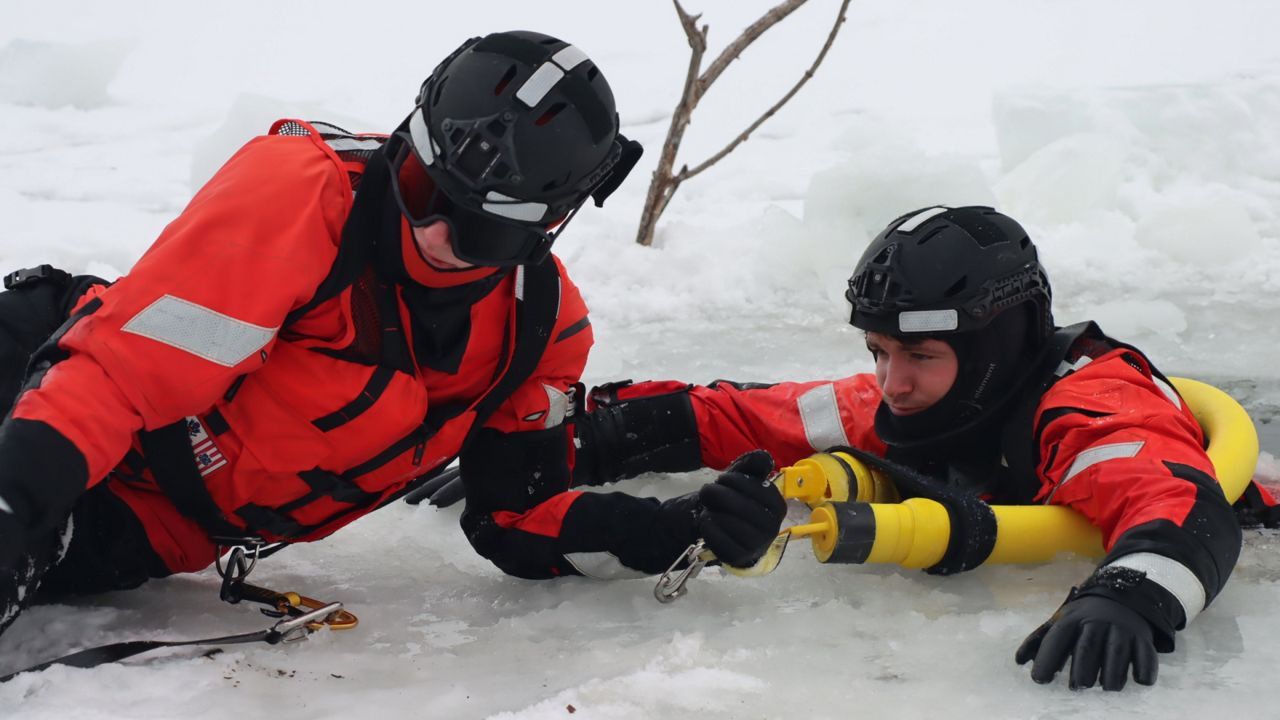The U.S. Coast Guard is issuing a warning as they are asking people to use caution as temperatures fluctuate around the Great Lakes this winter season.
The Coast Guard says warmer air temperatures can cause the ice to melt at an alarming rate while the water remains dangerously cold. That is especially true near the lake shore, where wind and sun reflecting from the lake floor can cause the ice to weaken and shift.
"Warmer air temperatures will cause frozen waters to melt at an alarming rate and may cause misperceptions about Great Lakes water temperatures, which will remain dangerously cold, posing safety concerns for anyone venturing onto the lakes," Coast Guard officials said in a press release.
"Ice is unpredictable and the thickness can vary, even in small areas. Warm temperatures and currents, particularly around narrow spots, bridges, inlets and outlets, are always suspect for thin ice. Stay away from cracks, seams, pressure ridges, slushy areas and darker areas since these signify thinner ice. In addition, ice near shore of a frozen lake may be unsafe and weaker because of shifting, expansion, wind and sunlight reflecting from the bottom."
Before heading out onto the ice or water, they suggest wearing a life jacket; dressing in bright colors and for the water temperature, not the air temperature; never going out alone; and to carry a registered personal locator beacon at all times.











